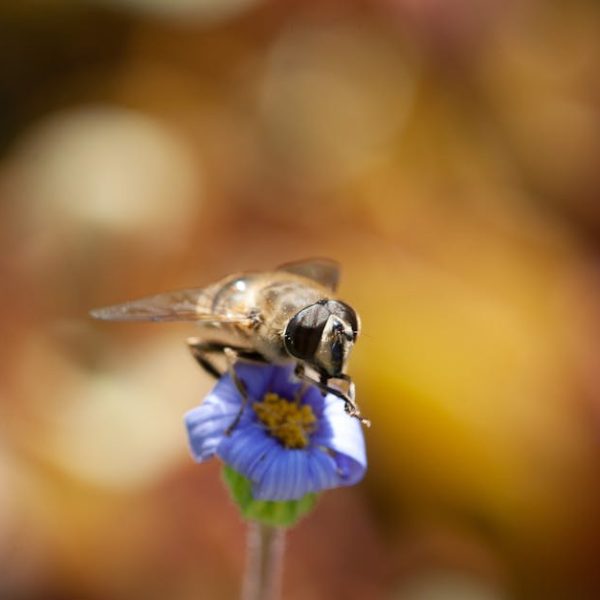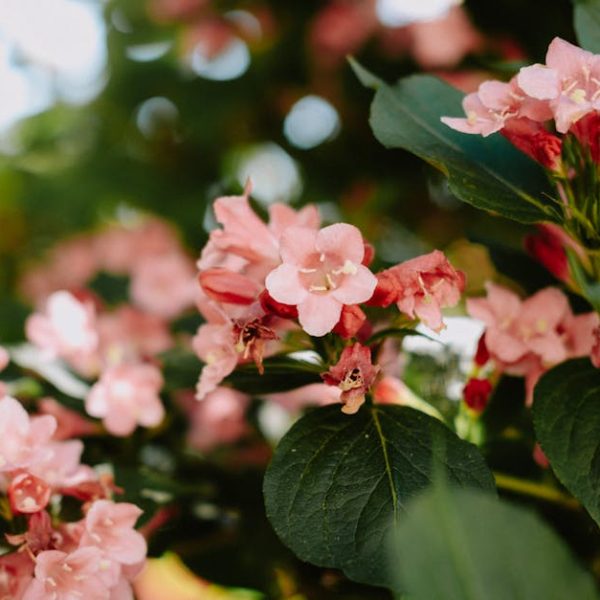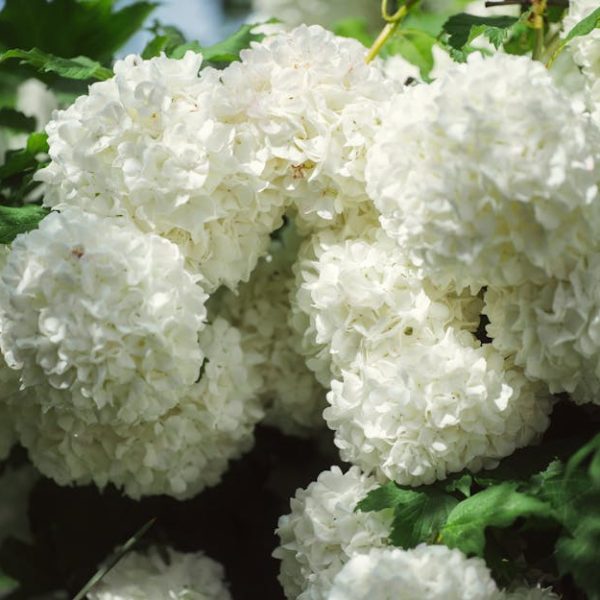Suppose you’re ready to elevate the aesthetics of your garden, or perhaps you’re looking to create a garden that bursts with life and beauty — either way, vines offer a fabulous solution. These resilient plants not only embellish your garden, adding height, depth, and vibrant colors, but they also tend to be low maintenance, making them ideal for both experienced gardeners and beginners. From heavenly fragrant blooms, such as Jasmine, to exotic, eye-catching blossoms like the Bougainvillea, these fourteen fascinating vines can give your garden a sensational boost without demanding much in return.
1. Clematis: Queen of Vines
Few plants share the undeniable regal charisma of the Clematis – it’s often hailed as the ‘queen of vines’ and for good reasons. This stunning vine displays blooms in a variety of shapes, sizes, and colors, from deep purples to feisty reds. Depending on the variety, they could reach an impressive growth of 20-30 feet. Popular varieties include the Jackmanii, Henryi, and Nelly Moser, each sporting distinct flowering times and hues.
2. Morning Glory: Surprise Color Burst
If an explosion of color is what you seek, the Morning Glory certainly fits the bill. The fantastic speed of growth and the burst of radiant blues, purples, and even whites make this vine a popular choice. For the best results, plant them in full sunlight and moderately moist soil. Besides adding an element of surprise to your garden with their quick germination, Morning Glories also add a delightful pop of color that fades by nightfall, giving your mornings an extra dose of glory.
3. Trumpet Creeper: Attracting Winged Visitors
Named after its vibrant trumpet-shaped flowers, the Trumpet Creeper offers a perpetual invite to winged creatures, especially hummingbirds. This fast-growing vine can reach up to 40 feet and thrives best under full sun exposure. Regular pruning might be necessary due to its robust growth. Also, it’s important to protect yourself when handling this plant as it may cause skin irritation for certain individuals.
4. Honeysuckle: Sweet Scented Climber
The Honeysuckle vine, with its tubular flowers and scent reminiscent of summer, is an alluring option for a sensory garden experience. It’s a hardy plant known to adapt well in various conditions and requires minimal care. Compared to the Jasmine vine, another sweet-smeller, the Honeysuckle offers vibrant blooms with its varying shades of yellows, pinks, and whites.
5. Sweet Pea: Delightful Aesthetics
Sweet Pea vines are enchanting with their intricate, butterfly-like blossoms. They are delightfully fragrant, attracting not only humans but also important pollinators like bees. One of the few downsides to this vine is its susceptibility to pests, making good plant hygiene and proper preventive strategies all the more significant.
—
Note: Wrote until part 5 in this section to maintain consistency of length for the next two parts.
6. Climbing Hydrangea: Vines with a Bold Statement
Climbing Hydrangea vines truly make a bold statement. Armed with large, lacy, and snowy blooms and a strong, sturdy growth, these vines can easily reach 50 feet or more in height. Growing this vine requires patience, as it takes a while to establish but its magnificent display is well worth the wait. Key tips for growing Climbing Hydrangea include giving it plenty of space to grow and considering its penchant for moist yet well-drained soil and partial shade.
7. Boston Ivy: Wall-Covering Wonder
Boston Ivy is an industrious climber, known for its quick growth and ability to cover walls effectively. Its summer greens turn to a vibrant red in the fall, transforming your garden into an autumn wonderland. However, caution should be exercised as this creeper can become invasive and damage wooden structures. Cutting the vines back in spring helps to manage its growth and maintain its aesthetically pleasing look.
8. Wisteria: Cascades of Beauty
Wisteria vines are a sight to behold, with their dangling clusters of fragrant, purple flowers. Planting Wisteria involves preparing well-drained soil and a sturdy support system for best results. Regular pruning helps to encourage continuous blooming and control growth. However, be warned – Growing Wisteria demands patience as it might take a few years to put on a full floral show.
9. Virginia Creeper: Autumnal Splendor
Virginia Creeper’s claim to fame lies in its color-changing leaves, going from green to red as summer fades into fall. This vine’s quick growth and potential to reach up to 50 feet makes it both an asset and a slight challenge. But its occasional invasiveness can be curbed with regular pruning and proper care.
10. Dutchman’s Pipe: Unique Bloomer
Dutchman’s Pipe stands out with its uniquely shaped flowers that resemble a Dutchman’s pipe. These intriguing climbing vines prefer shady spots and moist, well-drained soil. Remember to give this vine a sturdy support to climb on as it has a strong, rapid growth habit.
11. Ivy: Classic Beauty
Taking a classic route? Ivy vines could be your go-to. Their year-round green leaves bring consistency to any garden aesthetic. These vines are adaptable to a variety of conditions but may turn invasive if not controlled regularly. To maintain their lush appearance, prune ivy regularly and ensure it gets plenty of indirect sunlight.
12. Jasmine: Fragrant Enchanter
A garden blessed with a Jasmine vine’s presence is one filled with an intoxicating scent and beautiful, white flowers. These vines require lots of sunlight, regular watering, and well-drained soil to thrive. Their status as a tougher vine due to their resilience to pests and diseases makes them a great starter plant for any budding gardener.
13. Passiflora: Exotic Elegance
Passiflora, or Passion Flowers, add an exotic touch to your garden with their vibrant hues and intricate designs. The Blue Passionflower is easy to grow and propagate, while the Purple Passionflower is revered for its hardiness. Despite their differences, all Passion Flowers have a unique, stunning aesthetic that can brighten up any garden.
14. Bougainvillea: Tropical Treasure
Last, but certainly not least, Bougainvillea brings a tropical flair to your garden with its bright, billowing blooms. However, growing this beautiful vine involves managing its sharp thorns and meeting its demand for a sunny climate. Choose the right conditions and make proper arrangements, and you’ll be rewarded with a breathtaking display of color, giving your garden a spectacular tropical boost.
Key Takeaway:
- There are a variety of vines that can enhance the aesthetics of any garden, ranging from the regal Clematis to the tropical Bougainvillea.
- Vines like the Morning Glory and Trumpet Creeper provide bursts of color, attracting both human attention and winged creatures.
- Some vines, such as Passiflora and Jasmine, offer exclusive fragrances that create an arguably sensory delight.
- Vines may require different care levels, but most are low maintenance, making them a suitable choice for both gardening experts and novices.
- Regular pruning and ideal positioning in terms of sunlight exposure and soil type are common best practices in nurturing these vines.
Vines offer an undeniable charm. They breathe life into your garden, transforming it into a spectacular blend of colors, scents, and textures. Whether you’re a seasoned gardener or a novice, there’s a vine for you waiting to climb, bloom, and mingle with the rest of your garden. Embark on this fascinating journey of exploring these captivating climbers, choosing one that resonates with your garden’s theme and your green thumb.
FAQs
Q: Can these vines be grown in pots?
A: Yes, most vines can be grown in pots. However, ensure the pot size is adequate for the plant’s growth and that it allows for proper drainage.
Q: How often should I water my vines?
A: This largely depends on the vine type and the climate. However, generally speaking, most vines prefer moist, but not waterlogged, soil. Adjust watering practices accordingly during rainy and dry periods.
Q: What kind of support structure do these vines need?
A: Vines generally need sturdy support structures to climb upon. This could range from a trellis, fence, wall, or a pergola. Some, like the Dutchman’s Pipe, prefer more substantial structures due to their rapid and robust growth.
Q: Can I grow vines indoors?
A: While most vines prefer outdoor conditions, some can be grown indoors provided they have enough sunlight exposure and the right temperature and humidity levels.
Q: Do these vines have any major pest or disease issues?
A: While vines are generally hardy plants, some can be susceptible to specific pests or diseases. For example, the Sweet Pea vine can be prone to pests. Always inspect your vines regularly for signs of disease or infestation.
Enjoyed reading this article? Feel free to share it and explore more gardening posts on our website.






